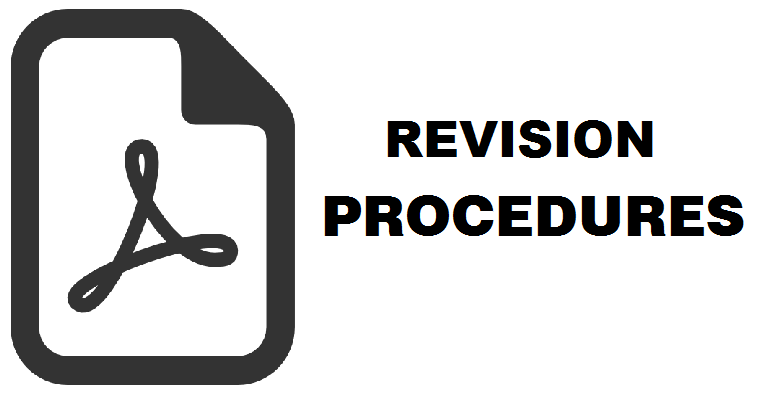Tingkat kesiapan Perpustakaan Universitas Gadjah Mada dalam penerapan summon discovery service
Ulfaa Isthuufia(1*)
(1) STIKES Maharani, Malang
(*) Corresponding Author
Abstract
Introduction. The information retrieval service continues to experience growth form of a card catalog into a computer-based catalog (OPAC), and became discovery. The purpose of this study to determine the level of readiness of UGM Library in the application of summon discovery service.
Data Collection Method. This paper used survey with a quantitative approach.
Analysis Data. The data was analyzed by statistical descriptive and hypothesis testing using SPSS software.
Results and Discussions. The results showed of the organizational readiness of 2.55, which categorized “ready”The level of readiness of organizational resources obtained the score 2.54 and categorised “ready”.
Conclusions.. In the variable organization, the highest indicator was organizational culture followed by the organizational structure and management support. In terms of organization Resources, human resources were the highest followed by ICT, and financial resources.
Keywords
Full Text:
PDFReferences
Arikunto, S. (2009). Prosedur penelitian suatu pendekatan praktik (6th ed.). Jakarta: Rineka Cipta.
Debonis, R., O’Donnell, E. & Thomes, C. (2012). (Self-) discovery service: Helping students help themselves. Journal of Library & Information Services in Distance Learning, 6, 235–250. https://doi.org/10.1080/1533290X.2012.705648
Desson, K. & Clouthier, J. (2010). Organizational culture – Why does it matter? Presented to the Symposium on International Safeguards International Atomic Energy Agency Vienna, Austria November 3, 2010 (AEA-CN-184/315). Retrieved from http://www.iaea.org/safeguards/symposium/2010/Documents/PapersReposit ory/315.pdf
De Vito, J. (2011). Human communication. New York: Pearson Education.
Endaryati, E. (2016). Pengaruh ukuran organisasi, partisipasi pengguna, dukungan manajemen puncak, program pelatihan dan teknik personal sistem terhadap kinerja sistem informasi akutansi (Survei UMKM Kota Semarang). Jurnal Ilmiah Komputer Akutansi, 9(1), 25-34.
Hasibuan, Z. A., & Yofi A. (2011). Penerapan berbagai teknik temu kembali informasi berbasis hiperteks. Jurnal Komunikasi Ilmu Komputer dan Teknologi Informasi, 1(2), 1-10.
Ismail, A.I., Rose, R.C., Uli, J., & Abdullah, H. (2012). The relationship between organisational resources, capabilities, systems and competitive advantage. Asian Academy of Management Journal, 17(1), 151–173.
Kabashi, A., Peterson, C., & Prather, T. (2014). Discovery services: A white paper for the Texas State Library and Archives Commission. Austin, TX: Texas State Library & Archives Commission. Retrieved from https://www.tsl.texas.gov/sites/default/files/public/tslac/lot/TSLAC_WP_discovery__final_executive-summary.pdf.
Kowalski, G. (1945). Information retrieval systems: theory and implementation. Massachusetts: Kluwer Academic Publishers. Retrieved from https://mafiadoc.com/information-retrieval-systems-theory-and-implementation-the-_5a1d14dd1723dd27323b353d.html.
Nazir, M. (2011). Metode penelitian. Bogor: Ghalia Indonesia.
Nursalam. (2017). Metodologi penelitian ilmu keperawatan: pendekatan praktis. Jakarta: Salemba Medika.
Priyanto, I. F. (2012). Discovery. Makalah disampaikan dalam Seminar Nasional Perpustakaan Universitas Gadjah Mada, 3 Desember 2012. Diperoleh dari https://www.academia.edu/4437365/Discovery.
Priyanto, I. F. (2015). Readiness of Indonesian academic libraries for open access and open access repositories implementation: A study on Indonesian open access repositories registered in OpenDOAR (Dissertation, University of North Texas).
Putri, A. W. & Permana, A. (2013). Analisis latar belakang pendidikan tenaga perpustakaan terhadap kepuasan di Perpustakaan Poltekes Kemenkes Semarang. Jurnal Ilmu Perpustakaan, 2(1), 22-34.
Robbins, S. P. (2013). Organizational behavior 15th ed. New Jersey: Prentice Hall.
Sugiyono. (2013). Metode penelitian pendidikan pendekatan kuantitatif, kualitatif, dan R & D. Bandung: Alfabeta.
Susetyo, D. P., & Suherman, A. (2016). Dukungan manajemen, kemampuan teknik dan pelatihan terhadap kinerja sistem informasi akuntansi. Simposium Nasional Ilmu Pengetahuan dan Teknologi (SIMNASIPTEK), 18-27.
Tanny, F. J. & Putri, R. (2017). Sumber daya organisasi dan keunggulan bersaing berkelanjutan di perdana elektronik. AGORA, 5 (3). http://publication.petra.ac.id/index.php/manajemen-bisnis/article/view/6091/5589
Trunojoyo, H. (2010). Sistem temu balik informasi (sebuah contoh implementasi). Diakses dari http://husni.trunojoyo.ac.id/wp content/uploads/2.
Undang-Undang Republik Indonesia No. 43 Tahun 2007 tentang Perpustakaan.
Vaughan, J. (2011). Chapter 1: Web scale discovery what and why?. Library Technology Reports, 47(1), 5-11.
Weiner, B. (2009). A theory of organizational readiness for change. Implementation Science, 4(67), 1-9.
Yunianto, I. (2016). Panduan discovery search Perpustakaan UGM. Diakses dari http://lib.ugm.ac.id/ind/?page_id=3085
Article Metrics
Refbacks
- There are currently no refbacks.
Copyright (c) 2019 Berkala Ilmu Perpustakaan dan Informasi

This work is licensed under a Creative Commons Attribution-ShareAlike 4.0 International License.











